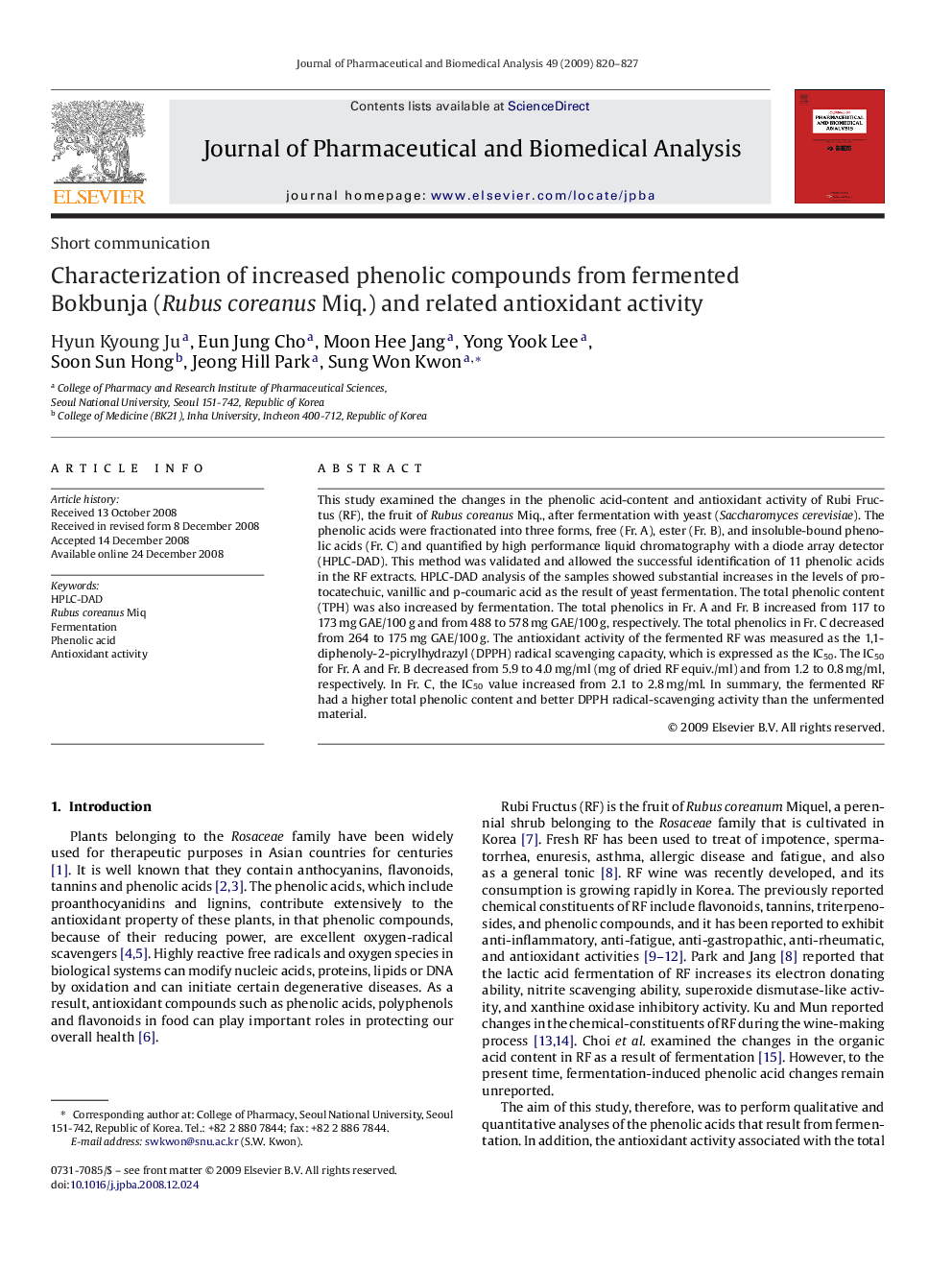| Article ID | Journal | Published Year | Pages | File Type |
|---|---|---|---|---|
| 10553668 | Journal of Pharmaceutical and Biomedical Analysis | 2009 | 8 Pages |
Abstract
This study examined the changes in the phenolic acid-content and antioxidant activity of Rubi Fructus (RF), the fruit of Rubus coreanus Miq., after fermentation with yeast (Saccharomyces cerevisiae). The phenolic acids were fractionated into three forms, free (Fr. A), ester (Fr. B), and insoluble-bound phenolic acids (Fr. C) and quantified by high performance liquid chromatography with a diode array detector (HPLC-DAD). This method was validated and allowed the successful identification of 11 phenolic acids in the RF extracts. HPLC-DAD analysis of the samples showed substantial increases in the levels of protocatechuic, vanillic and p-coumaric acid as the result of yeast fermentation. The total phenolic content (TPH) was also increased by fermentation. The total phenolics in Fr. A and Fr. B increased from 117 to 173Â mg GAE/100Â g and from 488 to 578Â mg GAE/100Â g, respectively. The total phenolics in Fr. C decreased from 264 to 175Â mg GAE/100Â g. The antioxidant activity of the fermented RF was measured as the 1,1-diphenoly-2-picrylhydrazyl (DPPH) radical scavenging capacity, which is expressed as the IC50. The IC50 for Fr. A and Fr. B decreased from 5.9 to 4.0Â mg/ml (mg of dried RF equiv./ml) and from 1.2 to 0.8Â mg/ml, respectively. In Fr. C, the IC50 value increased from 2.1 to 2.8Â mg/ml. In summary, the fermented RF had a higher total phenolic content and better DPPH radical-scavenging activity than the unfermented material.
Related Topics
Physical Sciences and Engineering
Chemistry
Analytical Chemistry
Authors
Hyun Kyoung Ju, Eun Jung Cho, Moon Hee Jang, Yong Yook Lee, Soon Sun Hong, Jeong Hill Park, Sung Won Kwon,
